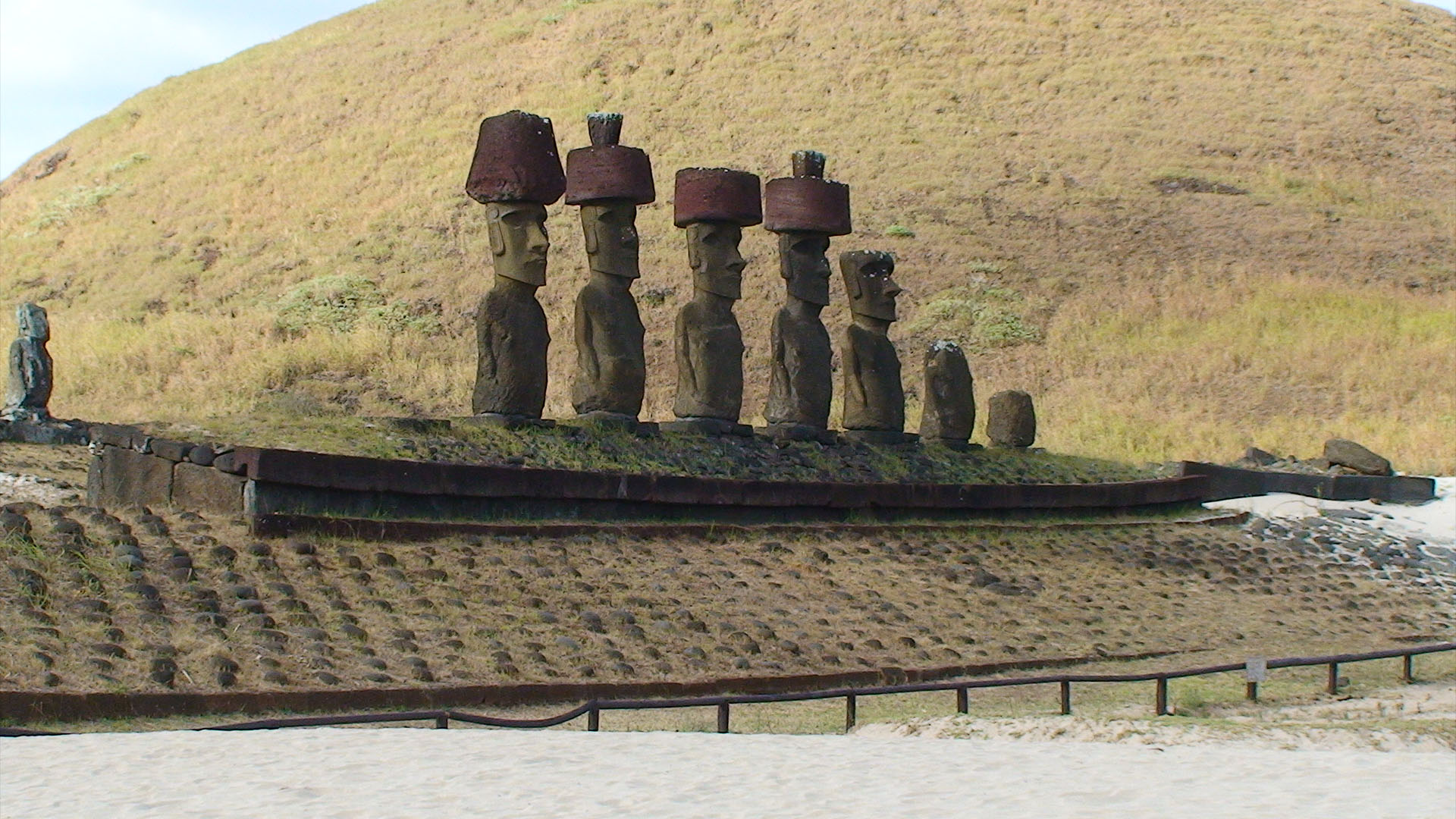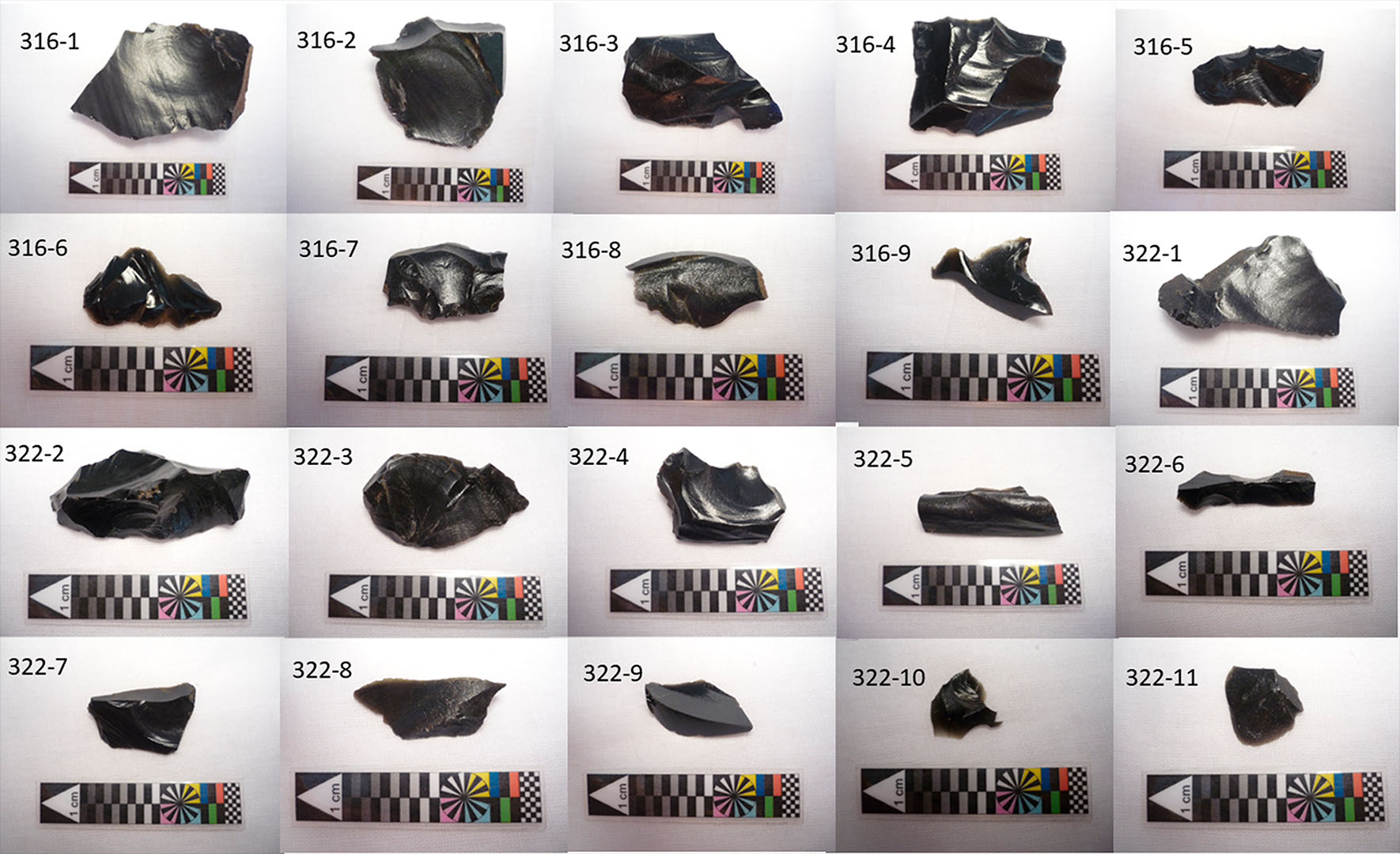Obsidian blades with food traces reveal 1st settlers of Rapa Nui had regular contact with South Americans 1,000 years ago
The earliest settlers of Rapa Nui, also known as Easter Island, appear to have had some sort of contact with people from South America as early as 1,000 years ago, a new plant study finds.

One thousand years ago, the first settlers of Rapa Nui — also known as Easter Island — feasted on a fusion cuisine of plants native to Polynesia but also ones indigenous to South America, around 2,300 miles (3,700 kilometers) away, a new study finds.
Researchers discovered the food remnants by identifying starch grains clinging to obsidian blades at the archaeological site of Anakena, the earliest known settlement on Rapa Nui, which was occupied from about A.D. 1000 to 1300, according to the study, published Wednesday (March 20) in the journal PLOS One. The finding suggests that the early Polynesians had regular contact with the people of South America as far back as a millennium ago.
The southeastern Pacific island Rapa Nui is known primarily for the hundreds of monolithic human statues called moai that were erected on stone ceremonial platforms called ahus. The island was formed from three volcanoes, two of which are now extinct, and early settlers carved the moai from the consolidated volcanic ash.
Although Rapa Nui was not known to the wider world until Dutch explorers landed there on Easter Sunday in 1722, the native people had already lived on the island for hundreds of years. But the specific timing of their settlement and their geographic origins remain somewhat mysterious, and experts disagree about whether the earliest settlers came from Polynesia, South America or both. The oral history of the Rapa Nui people suggests that at least one round-trip voyage to South America was made from the island during the early years of its settlement.
To investigate the early years of the Rapa Nui settlement, researchers took a deep dive into ancient food resources. Scientists already knew from animal bones that early settlers consumed fish, dolphins, seals, chickens and rats, but plant remains have not been as thoroughly investigated.
Related: Undeciphered script from Easter Island may predate European colonization

The researchers looked at 20 obsidian blades excavated from under the ahu at Anakena in 1987, which revealed evidence of 46 starch grains. Due to their size and preservation, though, only 21 grains could be classified, belonging to eight species: breadfruit, cassava (also known as yuca or manioc), taro, purple yam, sweet potato, Tahitian apple, achira and ginger. There were, in some cases, multiple species on a single obsidian blade, so the researchers suggested that the tools were multipurpose, used for cutting, scraping off peels, grating or other kinds of processing.
Sign up for the Live Science daily newsletter now
Get the world’s most fascinating discoveries delivered straight to your inbox.
Starch grains from yam and taro were not a surprise, having been previously identified on Rapa Nui, but the team's discovery of breadfruit and Tahitian apple is new, as neither plant had been found on the island before, and their discovery of ginger is a first for Remote Oceania, the researchers wrote. Both breadfruit and Tahitian apple are essential Polynesian crops, probably brought on canoes by the earliest Polynesian settlers, while ginger may have been used as a medicine and spice.
In addition to the Polynesian crops, the researchers found three species of South American starchy foods: achira, sweet potato and cassava. In particular, "the identification of sweet potato starch grains in the lower levels of the Anakena site suggests an introduction of this species to Rapa Nui during the earliest settlement period," the researchers wrote. Cassava also seems to have been present on Rapa Nui long before European explorers visited its shores.
"Our results show that, by the time that people were living at the Anakena site, they already had voyaged to the South American coast and been in contact with South American peoples," Andrea Seelenfreund, an archaeologist at the Academy of Christian Humanism University in Chile and one of the study authors, told Live Science in an email.
"We argue that Polynesian (Pacific) voyagers reached the coast of the American continent and interacted with local American populations and, at some later point, returned to the Pacific islands with some American crops that were then cultivated on different islands alongside traditional Pacific crops," Seelenfreund said.
Jo Anne Van Tilburg, an archaeologist at UCLA and director of the Easter Island Statue Project, told Live Science in an email that this research "contributes new information to the ongoing discussion of Rapa Nui prehistory." Van Tilburg, who was not involved in the study, said that, while the results are interesting and thought-provoking, some skepticism about the researchers' inferences is warranted because their method of identifying the ancient starch grains had low accuracy in some cases.
While the researchers caution in their study that more work needs to be done — such as looking for other plant species from the wider Pacific — they suggest it is highly likely there was sustained interaction between Polynesian and South American peoples nearly a millennium ago.
"We have to keep in mind that long distance ocean voyaging was a highly developed skill by Pacific Island people," Seelenfreund said.

Kristina Killgrove is a staff writer at Live Science with a focus on archaeology and paleoanthropology news. Her articles have also appeared in venues such as Forbes, Smithsonian, and Mental Floss. Killgrove holds postgraduate degrees in anthropology and classical archaeology and was formerly a university professor and researcher. She has received awards from the Society for American Archaeology and the American Anthropological Association for her science writing.









